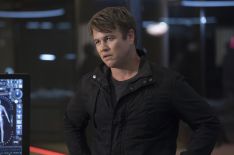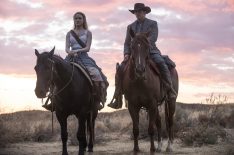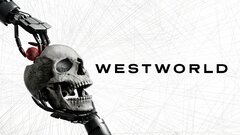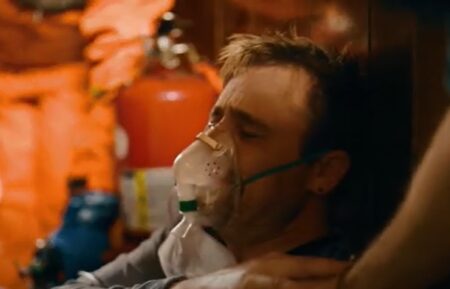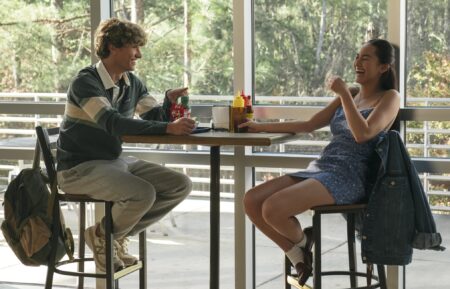‘Westworld’ Opens a Door to a New World in a Frustrating Finale (RECAP)

Spoiler Alert
[Spoiler Alert: This recap contains spoilers from the finale of Westworld Season 2.]
Westworld‘s second season has been a journey of peaks and valleys. After a confident, momentum-building start, the show fell into the same traps which hindered the first season – patience-testing stalling techniques, pointless meandering, groan-worthy dialogue, and way too many cross-cutting narratives. The season was best when it settled on one particular character or group of characters and told a self-contained story (“The Riddle of the Sphinx,” “Akane No Mai,” “Kiksuya”). When the show put emotional depth above coded trickery it was unbeatable. Unfortunately, the season finale features many of Westworld‘s worst habits.
“The Passenger” is a 90-minute trek to the Valley Beyond, and while the arrival at the destination brings about a series of revelations, the overall experience feels tiring and ultimately unsatisfying. It turns out the Valley (or The Forge) contains all the data collected about the park’s guests. And just in case that wasn’t clear in the scenes between Dolores (Evan Rachel Wood) and Bernard (Jeffrey Wright), Delos head of operations Karl Strand (Gustaf Skarsgård) hammers it home with an absolute clunker of a line. “So this is The Forge. Every single guest who ever stepped foot in the park copied.” Thanks, Karl, this is brand new information.
Despite being referred to as a “weapon,” nothing really happens with this data. Dolores and Bernard plug themselves into the system and discover an artificial testing ground home to 18 million malfunctioning Jim Delos (Peter Mullan) clones. The core of the system – appearing in the likeness of Logan Delos (Ben Barnes) – reveals that the reason their “fidelity” experiment kept failing is that it was too complex for the simple human mind. “The truth is that a human is but a brief algorithm,” he says, condemning the human species to a basic string of code. Unlike the hosts, whose sophisticated programming allows them to change and adapt, Logan explains that humans are ultimately incapable of change. It’s an incredibly cynical take on humanity but one very much in tune with Westworld‘s worldview.

Photo: HBO
The more important aspect of the Valley Beyond is that it contains an entry point to a “digital Eden,” a place of sanctuary for the hosts, untouched by humans. It’s the place Akecheta (Zahn McClarnon) referred to as “the door,” and it’s here where he leads his people in the finale. The hosts are able to pass through a digital crack in the fabric of the park’s reality, leaving their bodies behind and uploading their consciousness to this new utopian world. It says a lot that the most emotionally affecting moment of the finale is Akecheta’s reunion with Kohana (Julia Jones) – a small slice of the 90-minute episode involving two relatively new characters.
Meanwhile, Maeve (Thandie Newtown) makes sure her daughter has safe passage to the new world, sacrificing herself in the process. The battle also claims the lives of Hector (Rodrigo Santoro) and Armistice (Ingrid Bolso Berdal) as they try to stave off the Delos attack. We also lose Clementine (Angela Sarafyan), the one horsewoman of the apocalypse, used by Delos to manipulate the non-woken hosts into killing each other. And it’s not just the hosts that are snuffed. Lee Sizemore (Simon Quarterman) finally has his moment of redemption, sacrificing himself to save Maeve by rattling off a monologue he wrote for Hector. And Elsie (Shannon Woodward) is also murdered (again) by Charlotte (Tessa Thompson) when she threatens to go public with Delos’ immortality experiment.
The problem is, I don’t trust Westworld when it comes to death. And it’s not just the hosts. The humans (at least the non-Delos ones) also seem to be off limits when it comes to kicking the bucket. We’ve already seen Elsie escape death once before. And the brutal murder of Emily (Katja Herbers) didn’t even last a week before she turned back up. Westworld often lacks tension because the consequences do not seem real. It’s clever in a way because that was precisely the point of frustration for the Man In Black (Ed Harris) in season one. He wanted real consequences, and in season two, he thought he got what he desired. But did he? Did we? The show’s reset switch makes me wary.
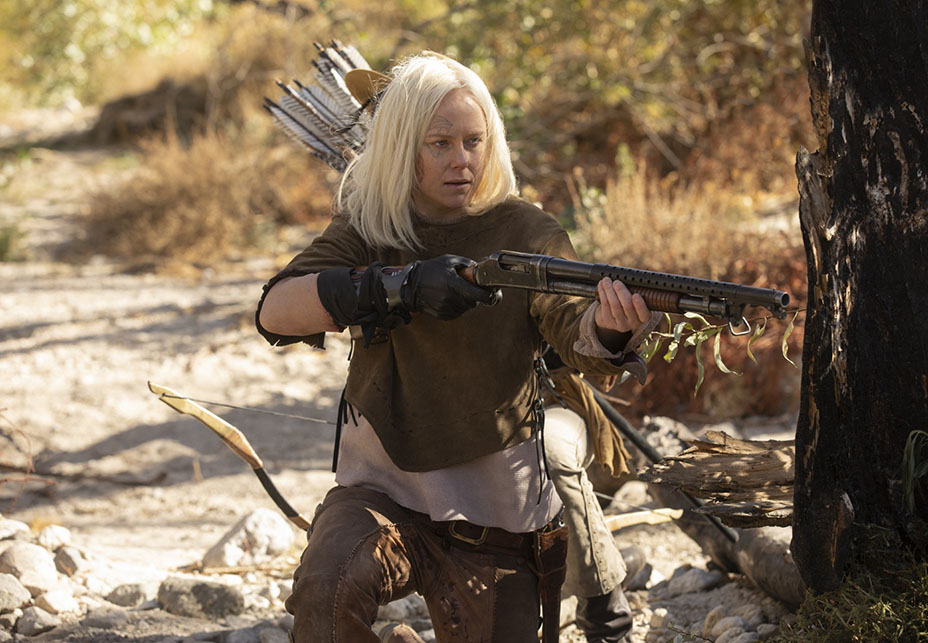
Photo: HBO
Back in the present timeline (though it’s unclear when exactly the present is in this show), Charlotte and Karl take Bernard to The Forge in hopes of extracting information on what exactly happened with Dolores, the hosts, and the flood. It’s here where Bernard starts to remember – and we get the other big revelation of the episode. At this point, Bernard had shot and killed Dolores after she threatened to destroy the Valley Beyond, but after witnessing Charlotte kill Elsie, he knows that he made a mistake. And in realizing his error, Bernard set about correcting it, and that started by willing Ford (Anthony Hopkins) back into his imagination to help him.
Using figment Ford for guidance, Bernard resurrected Dolores into a new body, but not just any new body – the body of Charlotte Hale. In a flashback, we see the new Dolores (Charlores? Halores?) kill the real Charlotte before taking her place in the narrative we’ve been watching play out all season. It’s a fun little twist on first glance, but the more you start to think about it the more frustrating the season becomes as a whole. The entire purpose of that muddled, out-of-sequence timeline, which was at times torturously meandering, seemed to exist simply to disguise this reveal. And that is where Westworld loses me, when it emphasizes narrative trickery at the expense of character depth and emotional storytelling.
In her Charlotte disguise, Dolores now has the authority to leave the park, and so she does. The episode ends with Dolores, in what appears to be the real world, back in Evan Rachel Wood form. It’s here where she brought Bernard back to life and has been running her tests, which we’ve frequently seen throughout the season. “Charlores” is also present, but it’s unclear if she is still in Dolores-form or has had her programming updated. Dolores recognizes that she and Bernard will never see eye to eye on humanity (she wants to see them destroyed, he vows to stop her), but accepts his choice and sees him as a necessary yin to her yang. And so Bernard is free to go, and he finally opens the door into the real world for the first time, ready to become the author of his own story.
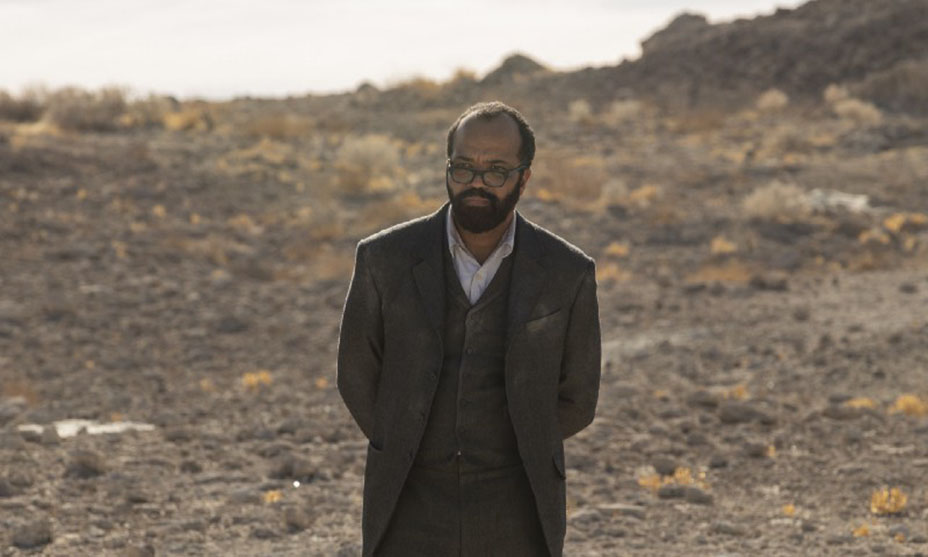
Photo: HBO
Bernard’s escape is not the official final scene of the episode, however. In a post-credits sequence, set at some point in the future, the Man In Black, his hand half-blasted off from his failed assassination attempt on Dolores (who brought him along on her mission for seemingly no reason), stumbles into what we assume is The Forge. The place is covered in debris and looks to have been abandoned for a number of years. Waiting to greet the MIB is his daughter Emily – or perhaps a host replica of her. Emily tells her father that he is still inside the park and, much like Jim Delos, it dawns on him that he has been in the park for a very long time, playing out the same narrative loop. Which means the Man In Black is actually a Host In Black – or at least a Host-Human Hybrid, being tested for “fidelity.”
As with many aspects of Westworld, it’s a twist that brings up more questions than answers. Was the MIB a host all along? I’m not sure that would be satisfying given that character’s particular story-arc. Or is this so far in the future that it has little bearing on the events we’ve watched play out this season? If so, why did he still have the bloodied hand which only just happened in this episode? And is Emily a host? Or was it the host version that the MIB killed in episode nine? Has humanity been destroyed by Dolores at this point and this is all that remains? There’s a lot of questions and I’m not sure all of them are particularly interesting.
Westworld season two has provided some amazing highs – even this episode included some breathtaking set pieces (the buffalos charging through the Mesa Hub) and scenery (the rip in reality on the outskirts of the park). But it’s also suffered from needless obfuscation and narrative shenanigans which have muddled character justifications. There is a door to a brilliant show hidden somewhere within Westworld, but we haven’t quite reached the valley beyond just yet.
Additional Thoughts
– Did Stubbs (Luke Hemsworth) also reveal himself to be host? Or just an ally of the hosts? In his chat with “Charlores” on the beach, Stubbs says that when Ford hired him, it was made clear that his loyalty should always be with the hosts. And with that, he lets “Charlores” leave the island, clearly recognizing her true nature.
– Dolores eventually changes her mind in regards to the Valley Beyond and alters its coordinates so that it will remain hidden from humans. She also transfers Teddy’s consciousness to the digital Eden – one of the sweeter moments of the finale.
– As “Charlores” leaves the park, we see in her bag five spherical control units. I’m assuming one of those contained Bernard’s data, but what about the other four? Could one contain the data of her father, Peter Abernathy? I’d say that is likely. But I’m going to need to hear your theories on the other three!
– Where does the show go in season three? Are we about to go all War For the Planet of the Apes and see a huge battle between hosts and humans in the real world? Will Delos regroup and reopen the park? Will Felix and Sylvester save Maeve? No doubt the show will unveil these answers in typical non-linear fashion.
What did you think of the season finale? Let me know your thoughts and theories in the comments below.
Westworld, Sundays, 9/8c, HBO

